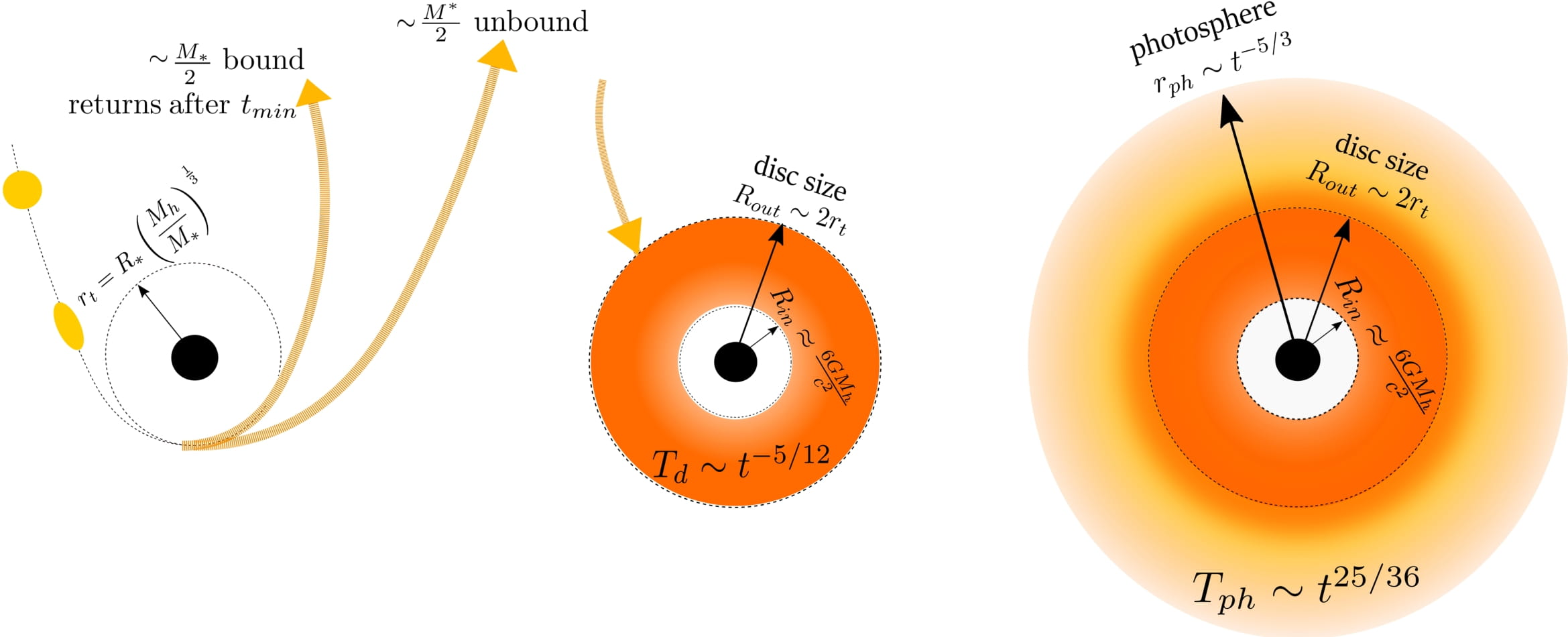
In collaboration with A. Wederfoort, MSc. ; supervised by Dr. E. M. Rossi (University of Leiden)
Read MoreTidal Disruption Events (TDEs) are violent disruptions of stars as a result of large tidal forces induced by extremely dense objects such as black holes and neutron stars. When a star gets disrupted, the tidal forces overcome the gravitational forces holding the star together. Due to the interaction between these forces, the star will be ripped apart. A fraction of the stellar material will be bound to the black hole. The remaining fraction of the material is unbound (left panel). The bound material can fall back to the Super Massive Black Hole (SMBH) and form an accretion disc (middle panel). For super-Eddington accretion rates, radiatively driven winds are expected to be launched, powered by the fallback material (right panel). These two components can generate large luminous flares that can be detected. Each component introduces a different time dependency into the lightcurve which we have analytically investigated.

created with
Website Builder Software .